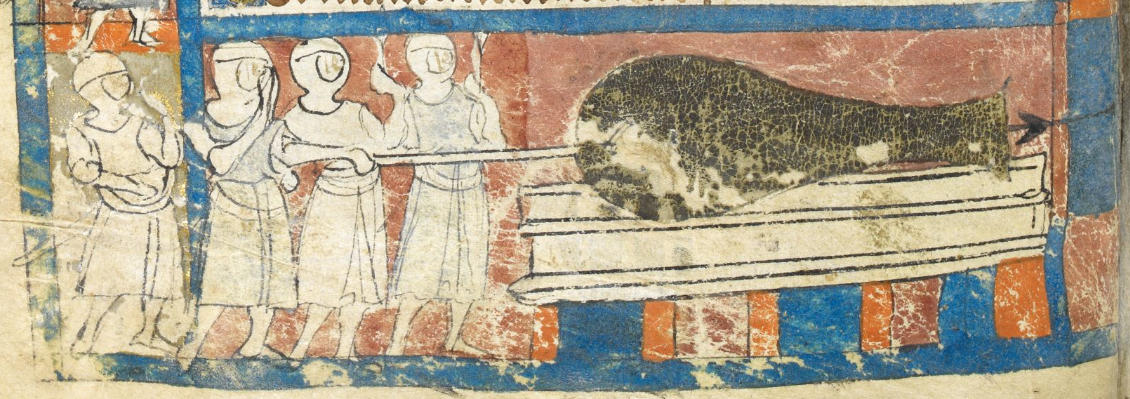
Try Amazon Fresh
An early cannon on the lower border of folio 44v, Secretum Secretorum by Pseudo-Aristotle, translated by Philip of Tripoli, London, England, 1326-1327.
British Library Add MS 47680.



Add MS 47680
Date: 1326-1327
Title: Pseudo-Aristotle, Secretum Secretorum, translated by Philip of Tripoli (Philippus Tripolitanus)
Content: The manuscript includes a pseudo-Aristotelian Arabic treatise, known as the Secretum Secretorum, in the Latin translation by Philip of Tripoli, imperfect.
f. 44v, knights operating a cannon.
The manuscript was illuminated in two phases, but the decoration was never completed.
Source: British Library Add MS 47680.
THE EARLY CANNON OF THE SECRETIS SECRETORUM
British Library Add. MS 47680, f. 44v
This is one of the earliest depictions of cannon, from 1326–1327, and it shows a large vaselike barrel lying on a table. The cannon is loaded with an arrow projectile, which was common throughout the fourteenth century. One of the four soldiers at the left is firing the gun, while all appear to be shielding their faces from the blast.
Source: p.287, Medieval Weapons: An Illustrated History of Their Impact by Kelly DeVries & Robert D. Smith (2007)